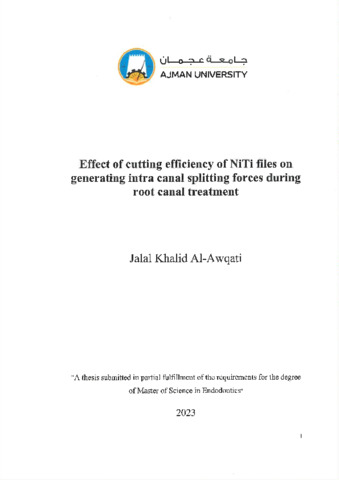Postoperative Pain after Single and Multiple Visit Root Canal Retreatment: A Randomized Controlled Trial
Abstract
Aims: The aim of this randomised clinical trial was to compare postoperative pain between single-visit and multiple-visits in retreatment cases involving anterior and premolar teeth.
Materials and Methods: A total of 47 patients, each with only one treated tooth, were included in the study. They were randomly assigned to either single visit treatment or multiple visits. The single-visit group consisted of 25 patients, while the multiple-visit group included 22 patients. All patients were treated following a retreatment protocol, local anesthesia, if needed, the crown was removed, and a rubber dam was placed to isolate the tooth. The canals were then cleaned by dis-obturating the gutta-percha with rotary or hand files, sometimes aided by solvent. Sodium hypochlorite (1.3%) was used for irrigation. Ultrasonic irrigation activation was done for 20 seconds for 3 strokes with an irrisafe tip, followed by EDTA (17%) flushing. The canals were dried and filled with gutta-percha and sealer, either using a single cone technique or warm vertical compaction. The access was sealed with GIC or composite, and a referral for a crown was made if necessary. Patients were given a Visual Analog Scale (VAS) sheet to self-assess and report their pain levels, preoperatively, after 6, 12, 24, 48, 72 hours,5 days and 7 days.
Results: The study found that pain levels decreased significantly over time in both single-visit and multiple-visit dental procedure groups, with the single-visit group
consistently reporting higher pain levels since the pre-intervention period. The pattern of pain reduction was similar between the groups, as indicated by a non-significant interaction effect. Significant differences were observed in initial pain levels, with the multiple-visit group having a higher rate of no pain at the start (90.5% vs. 62.5% in the single-visit group). The distribution of disobturation techniques varied significantly, with combined techniques more common in multiple-visit treatments.
Independent factors such as age and preoperative conditions influenced pain outcomes, but the primary finding of similar pain reduction over time across groups
remained valid.
Conclusion: The study found similar pain reduction in both single-visit and multiple visit root canal treatments. However, factors like symptomatic apical periodontitis
(SAP), age over 35, and second premolars increased pain in single-visit cases but reduced it in multiple-visit cases. Personalized treatment planning is crucial for better pain management.
